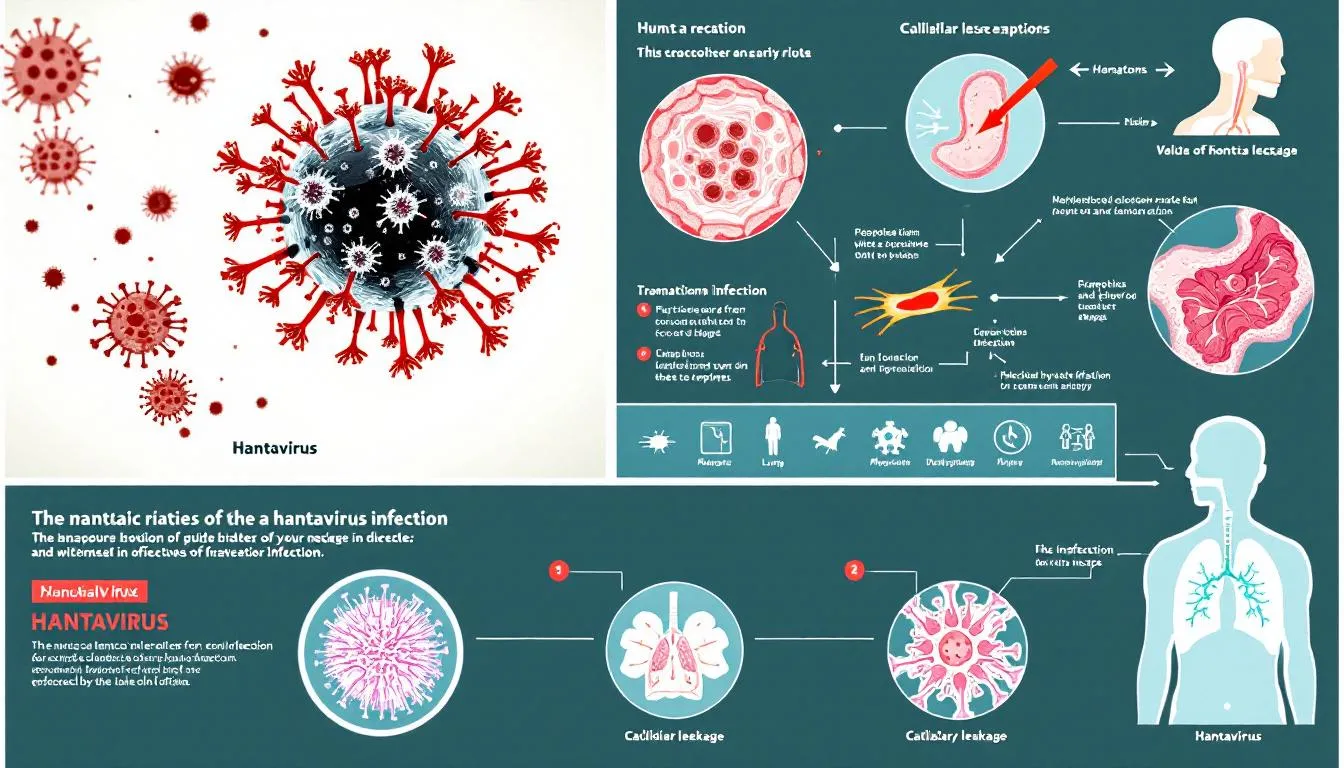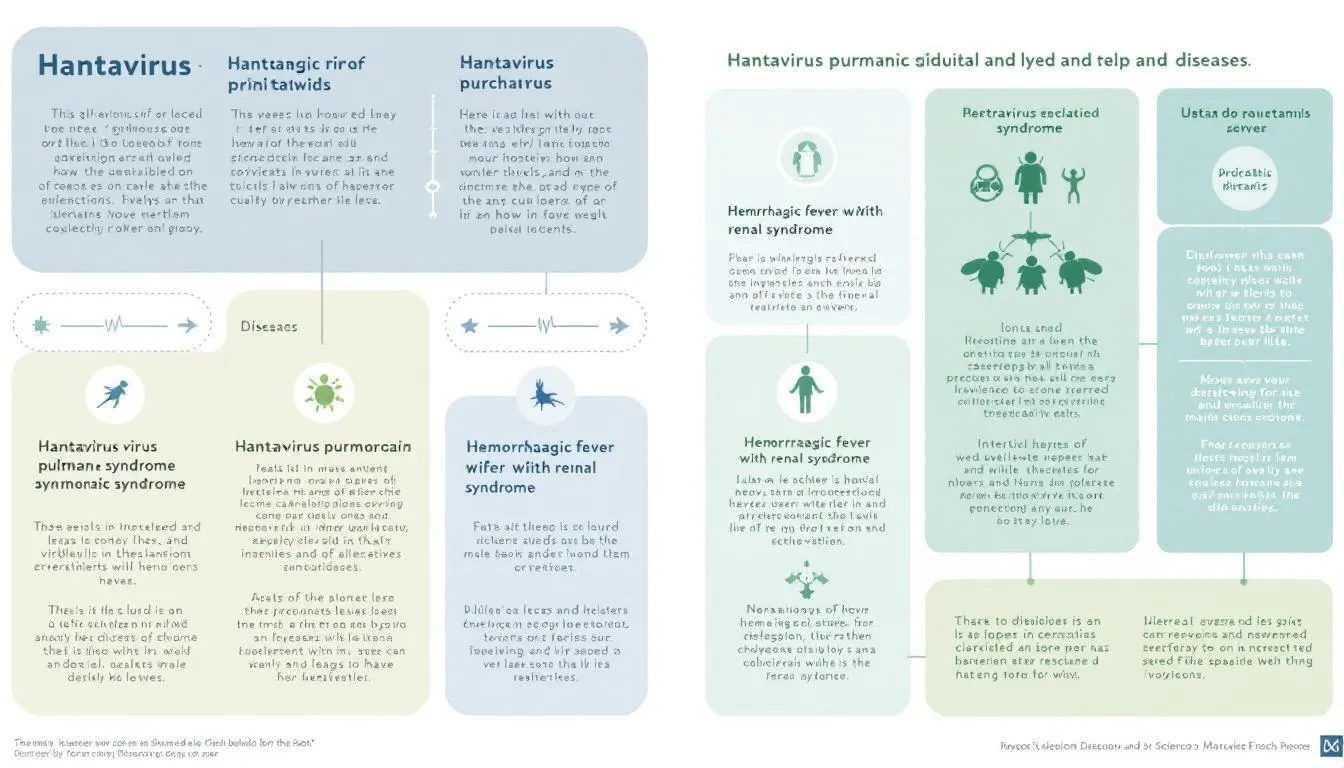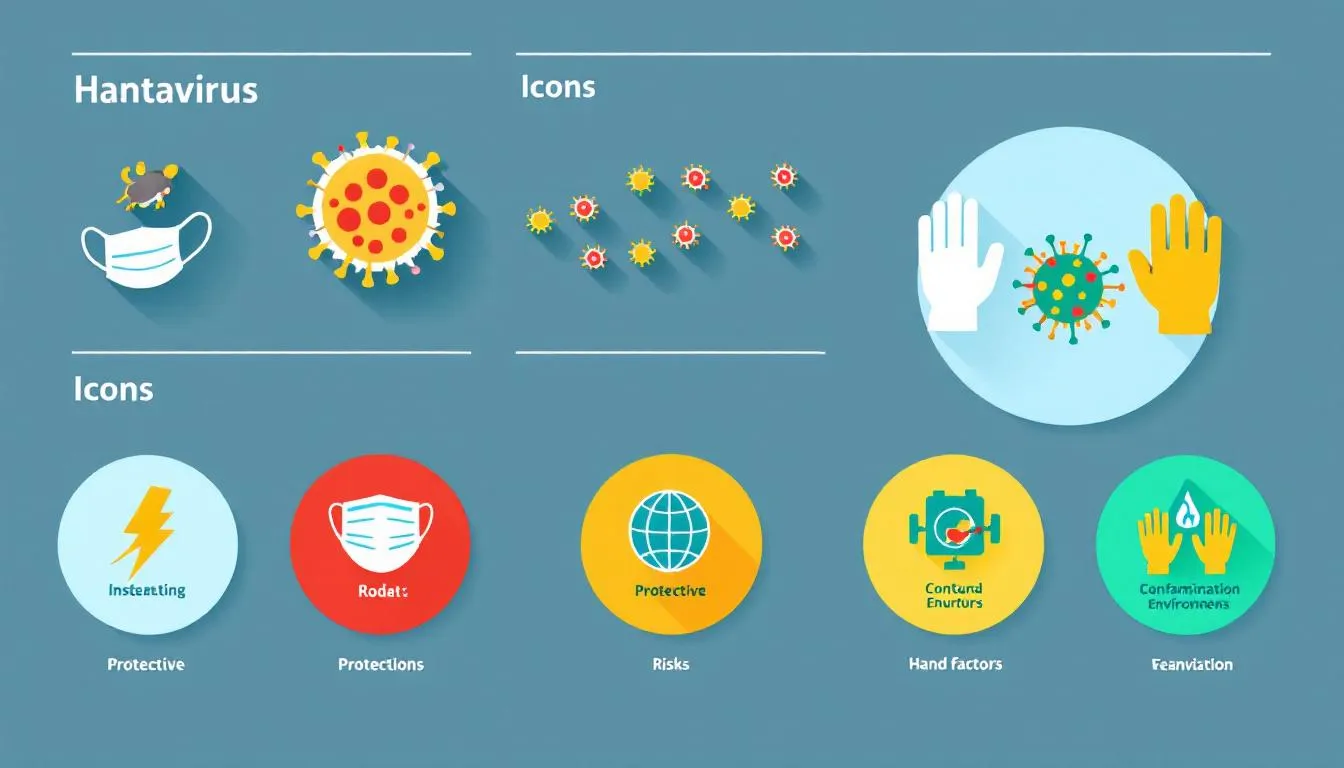Understanding the meaning of Hantavirus: Symptoms and Prevention

Understanding the Meaning of Hantavirus: Symptoms & Prevention
Hantavirus is a virus carried by rodents that can cause severe diseases in humans. Understanding the meaning of hantavirus is vital for recognizing its health risks and prevention. This article delves into what hantavirus is, its symptoms, ways it spreads, and how to stay safe.
Key Takeaways
Hantavirus is transmitted primarily through contact with rodent excretions, and can lead to severe diseases such as Hantavirus Pulmonary Syndrome (HPS) and Hemorrhagic Fever with Renal Syndrome (HFRS).
Symptoms of hantavirus infection often mimic flu-like conditions initially but can progress to severe respiratory issues, requiring immediate medical attention.
Preventive measures, including maintaining hygiene, rodent control, and proper cleanup procedures for contaminated areas, are crucial in reducing hantavirus infection risk.
What is Hantavirus?

Hantavirus is a diverse genus with over twenty-one species and more than thirty genotypes. These viruses are grouped by geographical distribution: New World hantaviruses in the Americas and Old World hantaviruses in Europe and Asia. Unlike many viruses, hantaviruses spread without the need for an arthropod vector.
Recognizing hantavirus infections is crucial because they can cause severe diseases like Hantavirus Pulmonary Syndrome (HPS) and Hemorrhagic Fever with Renal Syndrome (HFRS), leading to serious health complications and even death if not promptly diagnosed and treated.
How Hantavirus Spreads

Hantavirus primarily spreads through contact with rodent urine, feces, or saliva. Infection occurs by:
Touching contaminated objects
Eating contaminated food
Inhaling airborne particles from rodent excretions, especially in enclosed or poorly ventilated spaces.
Hantavirus can become airborne, with tiny droplets inhaled leading to hantavirus pulmonary syndrome (HPS). This transmission method underscores the need to avoid rodent-infested areas and maintain proper hygiene. While rare, the Andes virus strain can transmit person-to-person, primarily in South America.
Infection risk rises in areas with high rodent populations, like rural or wilderness regions. Preventing hantavirus pulmonary syndrome involves minimizing contact with rodents and their droppings, and keeping living and workspaces clean and rodent-free.
Symptoms of Hantavirus Infection
Early symptoms of hantavirus infection often resemble the flu, including fever, headache, muscle aches, nausea, and fatigue fever muscle aches. These signs can make distinguishing hantavirus from other viral infections difficult, potentially delaying medical care.
As the infection progresses, symptoms can become severe and life-threatening. In hantavirus pulmonary syndrome (HPS), late symptoms include coughing, severe shortness of breath, and chest tightness due to fluid in the lungs, requiring immediate medical attention.
In Hemorrhagic Fever with Renal Syndrome (HFRS), initial symptoms often include severe headaches and abdominal pain, developing suddenly and lasting 1 to 2 weeks. Prompt medical care is essential, especially if individuals have been in rodent-infested areas or contacted rodent droppings.
Types of Hantavirus-Related Diseases

Hantavirus infections can lead to two primary syndromes: Hantavirus Pulmonary Syndrome (HPS) and Hemorrhagic Fever with Renal Syndrome (HFRS), which can cause hantavirus pulmonary syndrome. Although caused by the same virus family, these diseases manifest differently and have distinct geographical distributions.
Hantavirus Pulmonary Syndrome (HPS) is predominantly found in the Western Hemisphere and is characterized by severe respiratory issues. On the other hand, Hemorrhagic Fever with Renal Syndrome (HFRS) occurs mainly in Europe and Asia, affecting the kidneys and varying in severity depending on the specific virus strain.
Hantavirus Pulmonary Syndrome (HPS)
Hantavirus Pulmonary Syndrome is a severe, potentially deadly lung disease requiring immediate medical attention. Initial symptoms include chills, headache, nausea, and flu-like symptoms, which can quickly progress to severe respiratory distress, highlighting the need for early recognition and prompt intervention.
As the disease advances, complications may include:
Trouble breathing
Irregular heart rates
Lung tissue damage
Fluid accumulation in the illness lungs fill
The incubation period for HPS is typically 1 to 8 weeks after contact with an infected rodent, with a death rate of 30% to 50% for the deer mice strain.
Hemorrhagic Fever with Renal Syndrome (HFRS)
Hemorrhagic Fever with Renal Syndrome is a severe disease primarily affecting the kidneys. The Seoul virus is one of the responsible viruses, and renal syndrome hemorrhagic fever severity can vary based on the specific infecting virus.
Complete recovery from HFRS can take several weeks to months, with fatality rates varying by virus. Infections from Hantaan and Dobrava viruses have fatality rates of 5-15%, while those from Seoul, Saaremaa, and Puumala viruses have less than 1% fatality rates.
Identifying Rodent Carriers

In North America, the deer mouse is the main hantavirus carrier, significantly spreading the virus. These small rodents are common in rural and wilderness areas. Other carriers include the rice rat, cotton rat, and white-footed mouse, especially in the Northeast.
Hantaviruses primarily infect rodent populations, establishing a persistent infection within their hosts. Direct contact with rodent droppings and urine significantly increases hantavirus exposure risk from infected rodents, making prompt identification and management of rodent infestations crucial.
Diagnosing Hantavirus Infections
Diagnosing hantavirus is challenging because its symptoms often resemble other viral infections. Health professionals typically begin by evaluating a patient’s history of contact with rodents or rodent-infested areas, a key indicator of potential hantavirus exposure.
When hantavirus pulmonary syndrome is suspected, chest x-rays assess lung condition and fluid accumulation, including pulmonary edema. Echocardiography may also be performed to rule out other potential causes of fluid in the lungs, ensuring an accurate diagnosis.
Early diagnosis is critical for effective treatment and management of hantavirus infections. If you experience flu-like symptoms and have been in contact with rodents, inform your doctor immediately to receive appropriate care.
Treatment Options for Hantavirus Infections
Managing severe hantavirus cases primarily relies on supportive care, especially in the intensive care unit. This includes hydration and symptom management to ensure the patient’s comfort and stability.
In hantavirus pulmonary syndrome cases, intensive treatments like mechanical ventilation or extracorporeal membrane oxygenation might be necessary to support breathing and oxygenation. Early medical intervention, including specific treatment, significantly increases recovery chances and reduces severe complications.
Risk Factors and Prevention

Hantavirus infections are particularly prevalent in regions west of the Mississippi River. Individuals in rural areas are at an increased risk, especially those in contact with rodents or rodent-infested areas.
Proper hand hygiene prevents infection. Wash hands with soap and water or use a disinfectant after cleaning and before removing gloves. For heavy infestations, wear additional personal protective equipment like coveralls, rubber boots, and respiratory protection to minimize exposure.
High-Risk Areas
Individuals frequently engaging in outdoor activities or living in rural areas are more vulnerable to hantavirus exposure. Areas with abundant vegetation and high rodent populations are particularly prone to outbreaks.
The Western U.S. has a higher prevalence of hantavirus cases linked to rodent populations. High elevation regions, like mountainous areas, report more cases due to specific rodent habitats.
Preventive Measures
Keeping rodents out of your home and workplace reduces the risk of hantavirus infection. Pest control measures such as sealing gaps or holes where wild rodents might enter, and using rodent proof containers or bait stations to manage rodent populations, are effective in preventing rodent infestation and addressing rodent food sources.
To protect yourself from Hantavirus Pulmonary Syndrome and prevent hantavirus pulmonary syndrome:
Avoid contact with rodents.
Safely clean areas where rodents may have lived.
Regularly inspect and clean suspected rodent activity areas.
Use disinfectants to minimize the risk of airborne virus particles.
Safe Cleanup Procedures
Hantavirus can become airborne when particles from rodent urine, droppings, or saliva are disturbed, increasing infection risk. Cleaning or opening rodent-infested buildings can stir up virus-laden dust, leading to potential infection.
To safely clean rodent-contaminated areas:
Prepare a bleach solution by mixing 1.5 cups of household bleach with 1 gallon of water.
Spray the area with the disinfectant.
Allow it to soak.
Wipe it up with paper towels.
Avoid using a vacuum or broom on rodent droppings or urine, as this can aerosolize harmful particles.
After cleaning, follow these steps:
Dispose of used paper towels in a covered garbage can to prevent contamination.
Always wear plastic gloves.
Ensure proper ventilation by opening doors and windows for at least 30 minutes before cleaning.
Summary
Understanding the meaning of hantavirus, its symptoms, routes of transmission, and preventive measures is crucial for safeguarding your health and that of your loved ones. With a clear knowledge of how hantavirus spreads, the types of diseases it causes, and the importance of early diagnosis and treatment, we can better protect ourselves from this hidden threat. Remember, prevention starts with awareness and proactive measures to avoid contact with infected rodents and their habitats. Stay informed, stay safe, and take the necessary steps to prevent hantavirus infections.
Frequently Asked Questions
How is hantavirus transmitted to humans?
Hantavirus is transmitted to humans mainly through contact with rodent urine, feces, or saliva, as well as by inhaling airborne particles from these materials. Avoiding areas where rodents may be present can help reduce the risk of transmission.
What are the early symptoms of hantavirus infection?
Early symptoms of hantavirus infection typically include fever, headache, muscle aches, nausea, and fatigue, often resembling flu-like symptoms. Recognizing these signs early is crucial for prompt medical attention.
How can I prevent hantavirus infection?
To prevent hantavirus infection, it's crucial to avoid contact with rodents, maintain cleanliness in your living spaces, seal potential entry points, and use proper disinfectants when cleaning rodent droppings. Taking these steps significantly reduces your risk of exposure.
What treatment options are available for hantavirus infections?
The primary treatment for hantavirus infections focuses on supportive care, including hydration and symptom management, with severe cases possibly requiring mechanical ventilation or extracorporeal membrane oxygenation. Immediate medical attention is crucial for effective management.
Which regions are considered high-risk for hantavirus infections?
High-risk regions for hantavirus infections include areas west of the Mississippi River, rural regions with dense vegetation, and high-elevation locations that support specific rodent habitats. It’s crucial to be aware of these areas to mitigate exposure risks.



